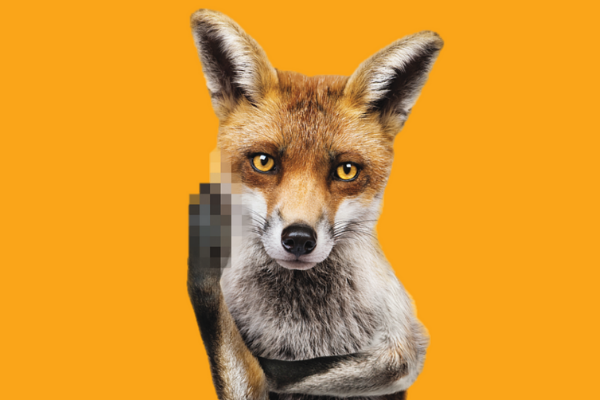We have a big Cheer: California’s fur ban, which passed the legislature in 2019, will finally go into effect in 2023. California is the first U.S. state to flip off fur and ban the sale of animal fur products.
The bill, authored by state assemblymaker Laura Friedman, applies to the sale and production of new products made from animals’ fur—including new clothing, handbags, shoes and other items made with fur. Those who violate the law would be subject to civil penalties.
Used fur and taxidermy products are exempt from the ban, as well as fur products used for religious purposes or by Native American tribes.
Although the FoA-backed historic legislation to ban the sale of fur in NYC, one of the big four fashion capitals of the world, has yet to cross the finish line, there is much to be thankful for in terms of the demise of the fur industry.
It can be a Herculean task to motivate legislatures, but public backlash matters, and these days consumers want no part of the violence toward animals and the harm to the environment that is at the core of the fur industry.
“Since consumers keep designers and retailers in business, the biggest names in fashion have fallen like dominoes, one after the other, banning fur from their designs and shelves,” said Priscilla Feral, president of Friends of Animals.
Who can forget Donatella Versace’s quote heard round the world in 2018? “Fur? I am out of that. I don’t want to kill animals to make fashion. It doesn’t feel right,” the Italian designer said in an interview for The Economist’s 1843 magazine.
Even Canada Goose, whose parkas trimmed with coyote skins have become ubiquitous, pledged last summer it would cease manufacturing all fur products by the end of 2022. Macy’s became the biggest U.S. retailer to phase out fur sales in 2021. That included its NYC Fur Vault Salon, where FoA held a protest in December 2014.
Feral, who joined FoA in 1974, remembers participating in NYC Fur Free Friday demonstrations, especially the one in 1998 when the fur industry spent big bucks to convince the public and media that “Fur is Back.” However, the truth was that fur sales peaked in 1987 and hit their lowest level in 1991. While there had been a small rise in sales, fur was still struggling. FoA headlined an article about it in this magazine “Fur is back. So is Elvis” accordingly.
With the media out in full-force, hundreds of animal advocates gathered to protest Saks’ fur sales. (In April 2021, Saks Fifth Avenue announced it will phase out using fur by the end of 2022.)
“Thousands of holiday shoppers got the message—fur is cruel and anti-fur sentiment is alive and well,” Feral said. “A ragtime band played while protestors dropped discarded furs on a “rag” pile at Saks front door. Other activists dressed as Neanderthals handed out leaflets reminding people that ‘Fur is a Thing of the Past’ and urged them to ‘Evolve.’ This same message was seen on the sides of buses.”
From Saks, demonstrators marched up Fifth Avenue and eight sat down in front of Revillon Fur Company blocking the entrance. As police moved in, another 12 showed up bound together by steel pipes. It took almost six hours for the police to cut through the pipes.
“Needless to say, no one was buying any fur at Revillon that day,” Feral said. “Instead, because of media coverage, millions of viewers had an opportunity to think about the cruelty that is fur. To make a fur coat, it takes 15-40 foxes, 50-60 minks or 150-300 chinchillas.”
“It’s been a decades-long fight to turn the tide against fur, and that’s why we are so grateful for all that’s been achieved. For a while we didn’t know if we were making a difference with our protests and fur free marches and our signage and our buttons,” Feral said. “Today you are seeing what’s going to be the end of the fur industry.”

